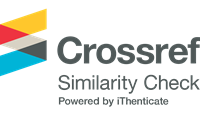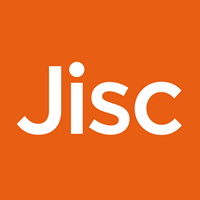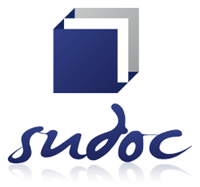Integrating postcolonial perspectives in the Community Cultural Wealth Model: a qualitative framework for educational research in South-South migration
Abstract
Nowadays, it is commonly recognized that educational researchers are challenged to address the cumulatively interwoven pathways where critical theories must become complementary and responsive to developing complex research design (e.g., Critical Race Theory). Postcolonial theories, in this sense, have longed enriched a criticality committed to the deconstruction of Western ways of knowing by interrogating and dislocating mainstream notions of science, modernity, and identity. Still, it seems necessary to engage in a discussion about how it would be possible to carry out research with a post-colonial perspective on current identity formation scenarios strongly marked by new pathways of social mobility in the Global South. This paper focuses on two contributions to postcolonial thought: 1) multiplicity, 2) and concrete study analysis. In it, the authors seek to share their experience designing a complementary qualitative framework underpinned by these terms that serve to translate and contextualize the model of Community Cultural Wealth (Yosso, 2005) as applied to developing global education research about immigrant students and their emerging educational pathways in relatively new pathways of social mobility in South America. By drawing on lessons learned from the ongoing research built on the testimonios of Latin American students and their mothers in the northern region of Chile, the authors share analytical strategies that deploy post-colonial perspectives to complement the content and narrative analysis normally deployed in ethnographic educational methods. Finally, this paper contributes to the ongoing discussion about fractures, expansions, and openings within post-critical educational investigations regarding methodological aspects; postcolonial thought contributes to the reinvention of new ways of thinking about cultural diversity in education.
Downloads
References
Appadurai, A. (2013). The future as cultural fact: essays on the global condition. Rassegna Italiana di Sociologia, 14(4), 649-650.
Anfara Jr., V. A., Brown, K. M., & Mangione, T. L. (2002). Qualitative analysis on stage: making the research process more public. Educational Researcher, 31(7), 28-38.
Bobo, J. (2006). The color purple: black women as cultural readers. In J. Storey (Ed.), Cultural theory and popular culture: a reader (p. 310-318). London, UK: Routledge.
Burawoy, M., Blum, J., George, S., Gille, Z. , Gowan, T., Haney, L., …Thayer, M. (2000). Global ethnography: forces, connections, and imaginations in a postmodern world. Berkeley, CA: University of California Press.
Calderon-Berumen, F. (2020). Latina immigrant mothers as educators: a testimonio of becoming. International Journal of Qualitative Studies in Education, 34(3), 262-275. DOI: https://doi.org/10.1080/09518398.2020.1753847
DeCuir, J. T., & Dixson, A. D. (2004). ‘So when it comes out, they aren’t that surprised that it is there’: using critical race theory as a tool of analysis of race and racism in education. Educational Researcher, 33(5), 26-31. DOI: https://doi.org/10.3102/0013189X033005026
Delgado, R. (1989). Storytelling for oppositionists and others: a plea for narrative. Michigan Law Review, 87(8), 2411-2441.
Dimitriadis, G., & McCarthy, C. (2001). Reading and teaching the postcolonial: from Baldwin to Basquiat and beyond. New York, NY: Teachers College Press.
Fairclough, N. (2003). Introduction. In N. Fairclough, Analyzing discourse: textual analysis for social research (p.3-18). London, UK: Routledge.
Go, J. (2016). Postcolonial thought and social theory. New York, NY: Oxford University Press.
Gonzalez, N., Moll, L. C., & Amanti, C. (2006). Funds of knowledge: Theorizing practices in households, communities, and classrooms. London, UK: Routledge.
Hall, S. (1986). Gramsci's relevance for the study of race and ethnicity. Journal of Communication Inquiry, 10(2), 5-27.
Hall, S. (1989). Cultural identity and cinematic representation. Framework: The Journal of Cinema and Media, 1(36), 68-81.
Hall, S. (2001). Museums of modern art and the end of history. In C. McCarthy, K. M. Goel, E. Bulut, W. Crichlow, B. N. Sanya, & B. Henson (Eds.), Spaces of new colonialism: reading schools, museums, and cities in the tumult of globalization (p. 285-294). New York, NY: Peter Lang Publishing.
Infante, M. D., & Matus, C. (2009). Policies and practices of diversity: reimagining possibilities for new discourses. Disability & Society, 24(4), 437-445. DOI: https://doi.org/10.1080/09687590902879049
Lowe, L. (2015). The intimacies of four continents. Durham, CN: Duke University Press.
Matus, C. (2019). Ethnography and education policy: a critical analysis of normalcy and difference in schools. Singapore, SG:Springer.
McCall, L. (2005). The complexity of intersectionality. Signs, 30(3), 1771-1800. DOI: https://doi.org/10.1086/426800
McCarthy, C., Giardina, M., Harewood, S. J., & Park, J. K. (2003). Afterword: contesting culture: identity and curriculum dilemmas in the age of globalization, postcolonialism, and multiplicity. Harvard Educational Review, 73(3), 449-465. DOI: https://doi.org/10.17763/haer.73.3.77873k17105l5140
Mullet, D. R. (2018). A general critical discourse analysis framework for educational research. Journal of Advanced Academics, 29(2), 116-142.
Ong, A. (2006). Neoliberalism as exception: mutations in citizenship and sovereignty. Durham, NC: Duke University Press.
Palacios Díaz, D., Hidalgo Kawada, F., Cornejo Chávez, R., & Suárez Monzón, N. (2019). Análisis político de discurso: herramientas conceptuales y analíticas para el estudio crítico de políticas educativas en tiempos de reforma global. Education Policy Analysis Archives, 27(47), 1-34.
Reyes, K. B., & Curry Rodríguez, J. E. (2012). Testimonio: origins, terms, and resources. Equity & Excellence in Education, 45(3), 525-538. DOI: https://doi.org/10.1080/10665684.2012.698571
Rocha, J. (2020). Pedagogies of sacrifices: the use of narratives as socialization in families and a human resource for resilience. Race Ethnicity and Education. 4(2), 186-209.
Sassen, S. (2002). Global cities and survival circuits. In J. A. Radway, K. Gaines, B. Shank, & P. V. Eschen (Eds.), American Studies: An anthology (p. 185-193). Oxford, UK: Wiley-Blackwell.
Saukko, P. (2003). Doing research in cultural studies: An introduction to classical and new methodological approaches. London, UK: Sage.
Solórzano, D. G., & Bernal, D. D. (2001). Examining transformational resistance through a critical race and LatCrit theory framework: chicana and chicano students in an urban context. Urban Education, 36(3), 308-342. DOI: https://doi.org/10.1177/0042085901363002
Solórzano, D. G., & Yosso, T. J. (2002). Critical race methodology: counter-storytelling as an analytical framework for education research. Qualitative Inquiry, 8(1), 23-44. DOI: ttps://doi.org/10.1177/10778004020080010
Solórzano, D. (1997) Images and words that wound: critical race theory, racial stereotyping and teacher education. Teacher Education Quarterly, 24(3), 5-19.
Stanton-Salazar, R. D. (2001). Manufacturing hope and despair: the school and kin support networks of US–Mexican youth. New York, NY: Teachers College Press.
Tsing, A. L. (2005). Friction: An ethnography of global connection. Princeton University Press.
Vavrus, F. K., & Bartlett, L. (Eds.). (2009). Critical approaches to comparative education: vertical case studies from Africa, Europe, the middle east, and the Americas. New York, NY: Palgrave Macmillan.
Yosso, T. J. (2005). Whose culture has capital? A critical race theory discussion of community cultural wealth. Race ethnicity and education, 8(1), 69-91. https://doi.org/10.1080/1361332052000341006
Walton, J., & Truong, M. (2022). A review of the model minority myth: understanding the social, educational and health impacts. Ethnic and Racial Studies, 46(3), 391-419. DOI: https://doi.org/10.1080/01419870.2022.2121170
Wimmer, A., & Glick Schiller, N. (2002). Methodological nationalism and beyond: nation–state building, migration and the social sciences. Global networks, 2(4), 301-334. DOI: https://doi.org/10.1111/1471-0374.00043

This work is licensed under a Creative Commons Attribution 4.0 International License.
DECLARATION OF ORIGINALITY AND COPYRIGHTS
I declare that this article is original and has not been submitted for publication in any other national or international journal, either in part or in its entirety.
The copyright belongs exclusively to the authors. The licensing rights used by the journal are the Creative Commons Attribution 4.0 (CC BY 4.0) license: sharing (copying and distributing the material in any medium or format) and adaptation (remixing, transforming, and building upon the material thus licensed for any purpose, including commercial purposes) are permitted.
It is recommended that you read this link for more information on the subject: providing credits and references correctly, among other crucial details for the proper use of the licensed material.














































